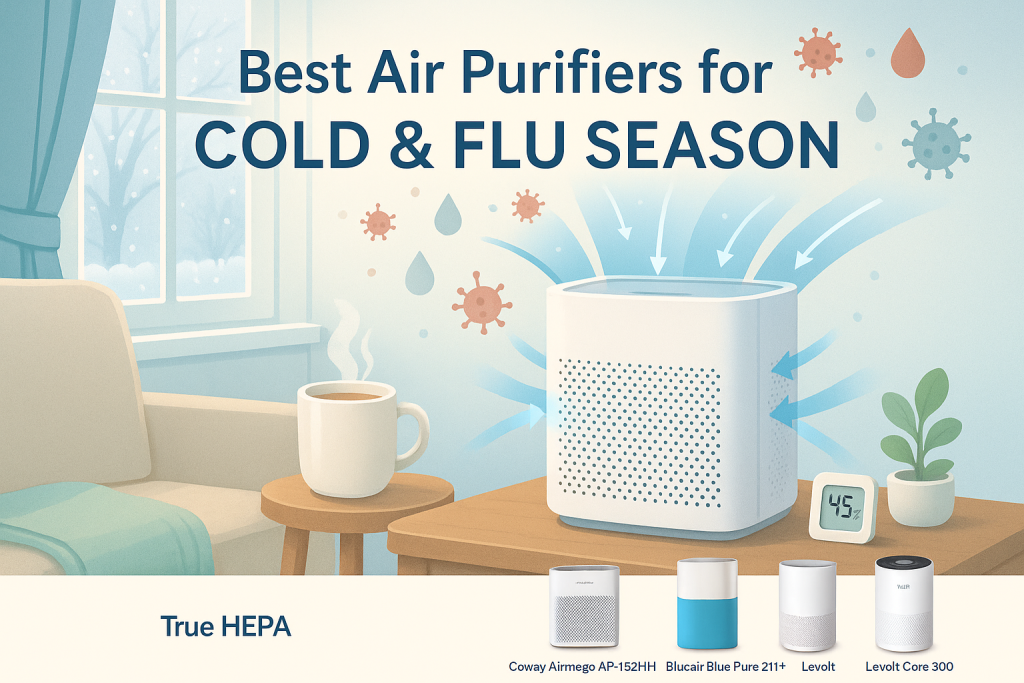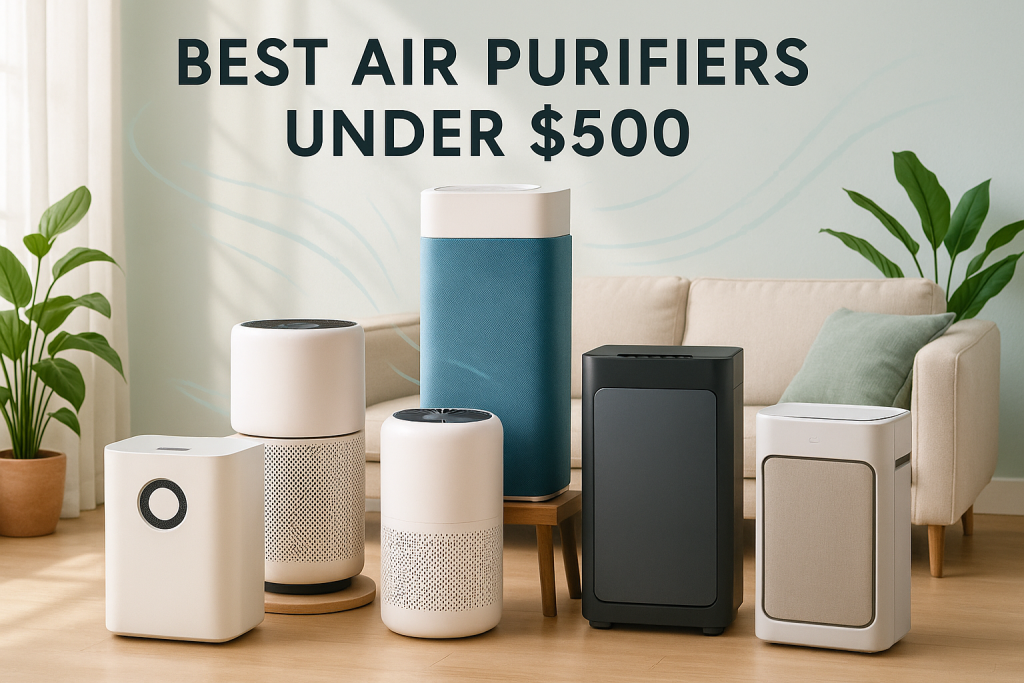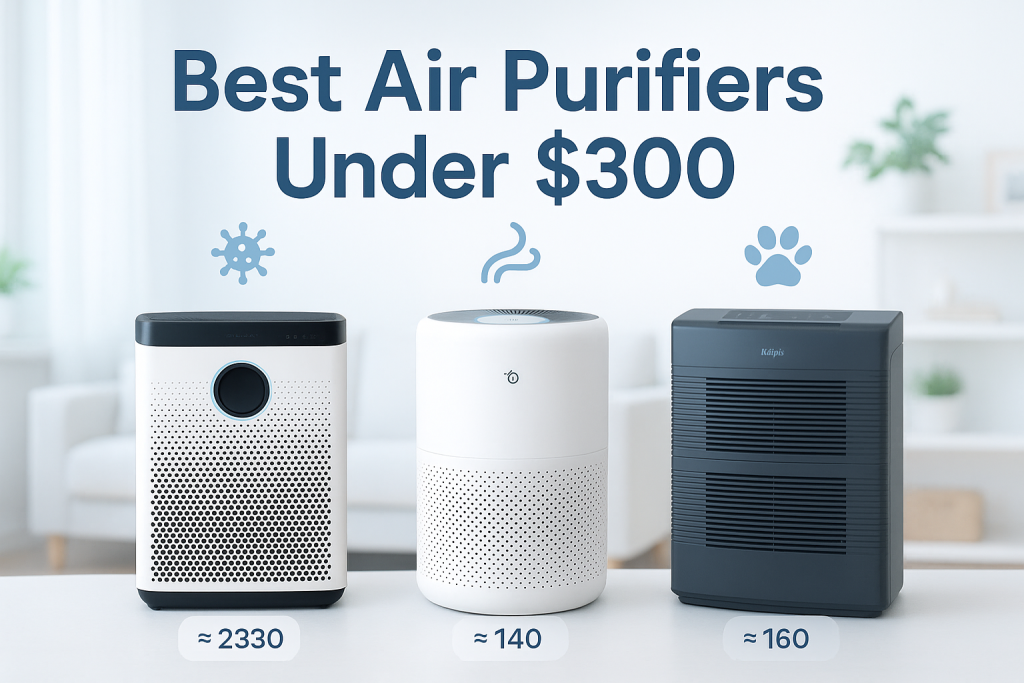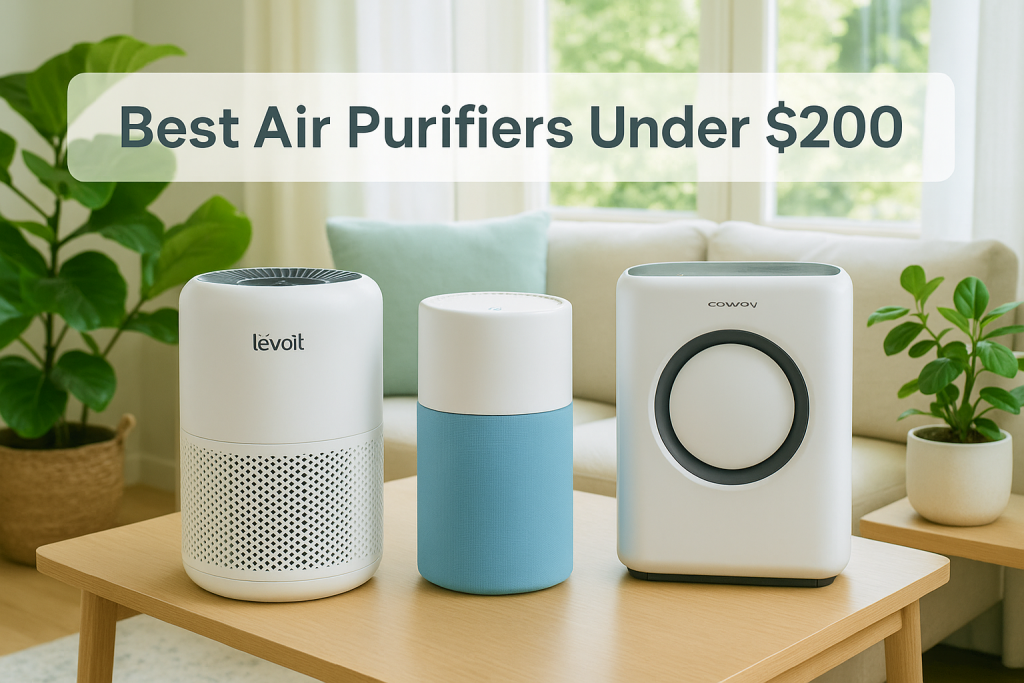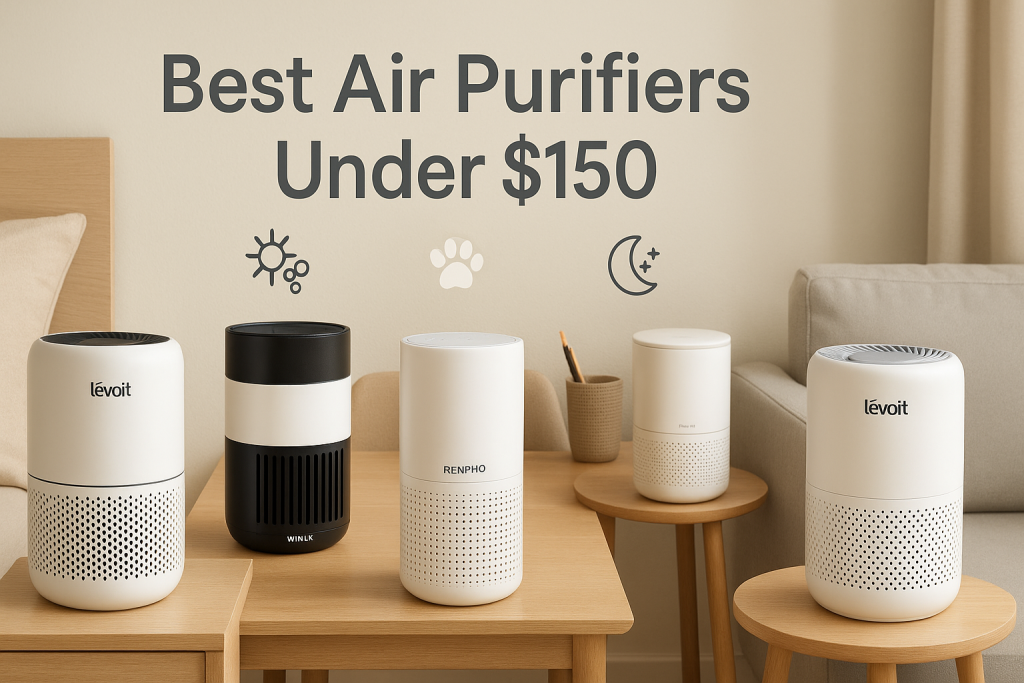Air purifiers become crucial health allies during cold and flu season when respiratory illnesses peak. These devices can significantly reduce airborne viruses, bacteria, and other contaminants that spread illness. This comprehensive guide examines the best air purifiers specifically designed to combat seasonal respiratory threats, exploring their virus-fighting capabilities, key features to consider, and how to maximize their effectiveness for healthier winter air.
How Air Purifiers Help Combat Cold and Flu Viruses
Air purifiers can significantly reduce the concentration of airborne viruses that cause colds and flu by capturing particles containing viral material before they can be inhaled. Most respiratory viruses travel through air via two main methods: larger droplets that quickly fall to surfaces and microscopic aerosols that can remain suspended for hours.
True HEPA filters, the gold standard in air purification, can capture particles as small as 0.3 microns with 99.97% efficiency. Cold and flu viruses typically range from 0.02-0.3 microns, but they rarely travel alone. These viruses attach to larger particles like respiratory droplets, making them capturable by quality HEPA filters.
According to the CDC, proper air filtration can be an important part of a multi-layered approach to reducing the transmission of airborne pathogens. Beyond HEPA filtration, some advanced purifiers incorporate additional virus-neutralizing technologies:
- UV-C light: Damages virus DNA/RNA, rendering them incapable of replication
- Ionization: Charges particles, causing them to cluster and become more easily filtered
- Photocatalytic oxidation: Creates hydroxyl radicals that break down viral structures
Understanding how air purifiers combat viruses helps identify the most important features to look for when choosing one for cold and flu season.
Key Features to Look for in Cold & Flu Season Air Purifiers
Not all air purifiers are equally effective against respiratory viruses. These critical features determine an air purifier’s ability to reduce cold and flu viruses in your home.
HEPA Filtration Standards
True HEPA filtration is essential for virus protection. Look for purifiers specifically stating “True HEPA” or “H13” classification, which guarantees capturing 99.97% of particles at 0.3 microns. Avoid products with “HEPA-type” or “HEPA-like” claims, as these lack certification and provide inferior protection.
CADR Ratings
Clean Air Delivery Rate (CADR) measures how quickly a purifier filters specific particle types. For virus protection, look for units with CADR ratings above 200 for smoke particles, which most closely approximate virus-carrying aerosols. Higher CADR ratings mean faster air cleaning.
Air Exchange Rates
Effective virus reduction requires 4-6 complete air changes per hour (ACH). This means the purifier should filter all room air at least 4 times hourly. Calculate this by matching the purifier’s coverage area to your room size, understanding that manufacturer claims often assume just 2 ACH.
Supplemental Technologies
While HEPA filtration forms the foundation of virus protection, certain supplemental technologies can enhance effectiveness:
- UV-C light: Proven virus inactivation, but requires sufficient exposure time
- Activated carbon: Doesn’t affect viruses but removes other contaminants like VOCs
- Cold plasma ionization: Shows promise for virus reduction but varies in effectiveness between models
Filter Quality and Replacement
Consider long-term costs of filter replacement, typically needed every 6-12 months. Virus protection diminishes significantly with clogged filters, so units with filter replacement indicators help maintain optimal protection during peak illness seasons.
With these key features in mind, let’s examine the top air purifiers specifically proven to combat respiratory viruses during cold and flu season.
9 Best Air Purifiers for Cold & Flu Season Protection
Based on virus filtration efficiency, independent testing, and real-world performance during respiratory illness seasons, these air purifiers offer the best protection against cold and flu viruses.
Best Overall: Coway Airmega AP-1512HH – Superior Virus Protection with Advanced Filtration
The Coway Airmega AP-1512HH combines exceptional virus filtration with practical features for cold and flu season. Its 4-stage filtration includes True HEPA capturing 99.97% of particles and a dense activated carbon layer.
Price range: $$$
CADR: 233 (dust), 246 (pollen), 240 (smoke)
Coverage: Up to 361 sq ft (with 4 ACH)
Filter replacement: Every 12 months, approximately $70
Pros:
- Air quality sensor with automatic mode adjusts to changing conditions
- Eco mode conserves energy during continuous winter operation
- Compact design fits easily in bedrooms where protection is crucial during illness
Cons:
- No UV-C or additional virus-specific technology
- Higher filter replacement costs than some competitors
Best for Large Rooms: Blueair Blue Pure 211+ – Powerful Virus Reduction for Open Spaces
For open-concept living areas where viruses can easily spread, the Blueair Blue Pure 211+ delivers exceptional performance with simplified operation.
Price range: $$$
CADR: 350 (overall rating)
Coverage: Up to 540 sq ft (with 5 ACH)
Filter replacement: Every 6 months, approximately $80
Pros:
- Exceptionally high CADR for faster virus removal in larger spaces
- HEPASilent technology combines electrostatic and mechanical filtration
- Washable pre-filter extends main filter life during heavy use seasons
Cons:
- No automated features or air quality monitoring
- Higher energy consumption on maximum settings
Best Budget Option: Levoit Core 300 – Effective Protection Without Breaking the Bank
The Levoit Core 300 proves that effective virus filtration doesn’t require a premium price tag, making it ideal for deploying multiple units throughout your home during illness seasons.
Price range: $
CADR: 141 (overall rating)
Coverage: Up to 219 sq ft (with 5 ACH)
Filter replacement: Every 6-8 months, approximately $30
Pros:
- True H13 HEPA filtration exceeds standard HEPA requirements
- QuietKEAP Technology allows bedroom use during illness recovery
- Specialized filter options including one designed for viruses and bacteria
Cons:
- Limited coverage area requires multiple units for larger spaces
- No smart features or air quality monitoring
Best for Bedrooms: Honeywell HPA300 – Quiet Operation with Excellent Virus Filtration
Since adequate sleep is crucial for immune function, the Honeywell HPA300 balances powerful filtration with quiet operation for bedroom virus protection.
Price range: $$
CADR: 300 (dust), 320 (pollen), 300 (smoke)
Coverage: Up to 465 sq ft (with 5 ACH)
Filter replacement: HEPA every 12 months ($70), pre-filter every 3 months ($15)
Pros:
- Multiple quiet settings suitable for overnight operation
- Turbo setting provides rapid air cleaning when illness is detected
- Timer function with auto-off saves energy while maintaining protection
Cons:
- Slightly higher filter replacement frequency during peak usage
- Control panel light can be bright in darkened bedrooms
Best Medical-Grade: IQAir HealthPro Plus – Hospital-Level Protection for Home Use
For households with high-risk individuals, the IQAir HealthPro Plus offers hospital-grade filtration with proven virus capture efficiency.
Price range: $$$$$
CADR: Not rated (uses different metrics)
Coverage: Up to 1,125 sq ft (with 2 ACH)
Filter replacement: PreMax every 18 months ($99), V5-Cell every 2-4 years ($129), HyperHEPA every 4 years ($200)
Pros:
- HyperHEPA filtration captures 99.5% of particles down to 0.003 microns
- Medical-grade construction with zero leakage ensures all air passes through filters
- Triple-seal technology prevents virus-containing particles from escaping
Cons:
- Significantly higher initial investment
- Larger footprint requires more space placement
Best Smart Features: Dyson Purifier Hot+Cool HP07 – Intelligent Monitoring for Seasonal Protection
The Dyson HP07 combines virus filtration with smart monitoring and additional functionality useful during winter illness seasons.
Price range: $$$$
CADR: Not directly comparable (uses different metrics)
Coverage: Up to 800 sq ft (manufacturer claim)
Filter replacement: Every 12 months, approximately $80
Pros:
- HEPA H13 filtration with sealed system approach
- Built-in heating function eliminates need for separate heaters that disrupt airflow
- App monitoring tracks air quality and filter life during critical illness periods
Cons:
- Higher price point for comparable filtration
- Fan function can create drafts that may affect virus dispersion patterns
Best Portable Option: Blueair Blue Pure 411 – Protection Wherever You Go
For protecting smaller spaces or moving protection between rooms as needed during illness recovery, the Blueair Blue Pure 411 offers impressive performance in a portable package.
Price range: $
CADR: 120 (overall rating)
Coverage: Up to 161 sq ft (with 5 ACH)
Filter replacement: Every 6 months, approximately $30
Pros:
- Extremely low energy consumption for continuous operation
- Exceptionally quiet operation (17-46 dB) for sick room use
- Lightweight design (3.4 lbs) allows easy relocation during illness
Cons:
- Limited coverage requires strategic placement
- No carrying handle despite portable intention
Best for Allergies & Viruses: Rabbit Air MinusA2 – Dual Protection Against Multiple Threats
Winter months often bring both respiratory allergies and virus concerns, making the Rabbit Air MinusA2 with its customizable filtration ideal for comprehensive protection.
Price range: $$$$
CADR: 200 (pollen), 193 (dust), 180 (smoke)
Coverage: Up to 815 sq ft (with 2 ACH) or 408 sq ft (with 4 ACH)
Filter replacement: Every 2 years, approximately $110
Pros:
- 6-stage filtration with customizable filter options (virus/germ-specific available)
- Ultra-quiet operation at low speeds (25.6 dB)
- Wall-mountable design saves floor space while optimizing airflow patterns
Cons:
- Higher initial cost despite moderate CADR ratings
- Complex filter replacement procedure compared to competitors
Best for Multi-Room Coverage: Medify MA-112 – Whole-Home Virus Protection
For comprehensive protection throughout open floor plans or larger homes, the Medify MA-112 delivers exceptional coverage with medical-grade filtration.
Price range: $$$$
CADR: 950+ (manufacturer estimate)
Coverage: Up to 3,700 sq ft (with 1 ACH) or 2,400 sq ft (with 2 ACH)
Filter replacement: Every 6 months, approximately $200
Pros:
- H13 True HEPA filtration certified to capture 99.99% of particles down to 0.1 microns
- Powerful enough to protect multiple connected rooms with single unit
- Child lock prevents settings changes during continuous operation
Cons:
- Considerable noise at higher settings (70 dB at maximum)
- High energy consumption during continuous operation
Selecting the right air purifier is just the first step. Proper placement and operation are equally important for maximizing protection during cold and flu season.
Strategic Placement of Air Purifiers During Cold & Flu Season
Where you place your air purifier significantly impacts its ability to reduce respiratory virus transmission in your home. These strategic placement guidelines maximize protection during cold and flu season.
Room Priority Hierarchy
Focus your air purification efforts in these locations, in order of importance:
- Bedrooms – Where people spend 6-8 continuous hours, often in close proximity
- Living rooms – High-traffic common areas where multiple people gather
- Home offices – Spaces with prolonged occupancy during daytime hours
- Kitchens – Areas where multiple people gather for meals and conversation
Positioning Guidelines
Follow these specific placement rules for maximum virus interception:
- Place purifiers at least 2 feet from walls and furniture to avoid airflow obstruction
- Position units 3-5 feet off the ground for optimal capture of suspended particles
- Keep purifiers away from electronics that generate electromagnetic interference
- Place between common virus “sources” (such as seating areas) and the rest of the room
- Avoid placing near open windows, drafty areas, or heating vents that create competing airflows
For bedrooms specifically, position the purifier about 6 feet from the head of the bed to provide clean air to the breathing zone without creating uncomfortable drafts. During cold winter conditions when homes are sealed tightly, proper placement becomes even more critical for effective virus reduction.
Even the best air purifier needs proper maintenance to remain effective against viruses throughout the cold and flu season.
Maintenance Schedule for Peak Cold & Flu Season Protection
During cold and flu season, your air purifier works overtime to capture viral particles. This enhanced maintenance schedule ensures continuous protection when you need it most.
Weekly Maintenance (During Peak Illness Periods)
- Inspect pre-filters for visible dust accumulation and clean as needed
- Wipe external surfaces with disinfectant-rated wipes
- Check intake vents for blockages from holiday decorations or winter items
- Verify indicator lights show proper operation and filter status
Monthly Maintenance
- Vacuum external grilles and accessible pre-filters (with machine powered off)
- Check filter replacement indicators – illness seasons accelerate clogging
- Inspect for unusual noises indicating potential motor strain
- Clean room sensors with dry cotton swab if equipped
Filter Replacement Safety
When replacing filters during illness periods:
- Wear disposable gloves and mask when handling potentially contaminated filters
- Place old filters directly into sealed plastic bags before disposal
- Perform replacement outdoors or in well-ventilated areas when possible
- Wash hands thoroughly after handling even with gloves
Manufacturers typically recommend filter replacement every 6-12 months, but during intense use in illness seasons, filters may need replacement 30-50% sooner. Budget accordingly and keep spare filters on hand during winter months when demand often increases.
Proper maintenance keeps your air purifier working efficiently, but combining it with other preventative measures creates a comprehensive defense system against respiratory illnesses.
Integrating Air Purifiers with Other Cold & Flu Prevention Strategies
Air purifiers are most effective as part of a comprehensive strategy to reduce respiratory illness transmission. This integrated approach combines air purification with other evidence-based preventative measures.
Humidity Management
Maintaining optimal indoor humidity levels between 40-60% creates an environment where respiratory viruses struggle to survive and transmit. Research shows influenza virus survival drops significantly in this humidity range.
Consider pairing your air purifier with a humidifier during dry winter months when indoor heating can drop humidity below 30%, creating ideal conditions for virus survival and transmission. Monitor levels with a hygrometer to avoid over-humidification that could promote mold growth.
Ventilation Strategies
While air purifiers filter existing air, proper ventilation introduces fresh air that dilutes virus concentration. Consider:
- Brief (5-10 minute) cross-ventilation periods, even in winter
- Running bathroom and kitchen exhaust fans to create negative pressure
- Using energy recovery ventilators that exchange air without significant heat loss
Surface Hygiene
While air purifiers address airborne transmission, many respiratory viruses also spread through surface contact:
- Disinfect high-touch surfaces daily during illness seasons
- Use EPA-registered disinfectants effective against enveloped viruses
- Focus on doorknobs, light switches, remote controls, and shared electronics
Behavioral Practices
Complement technological solutions with proven behavioral interventions:
- Proper handwashing with soap for at least 20 seconds
- Covering coughs and sneezes with tissues or elbows
- Isolation of sick household members when possible
- Seasonal vaccination as recommended by healthcare providers
Understanding how air purifiers compare to other technologies helps create a complete picture of your respiratory illness prevention options.
Air Purifiers vs. Other Technologies for Cold & Flu Prevention
Air purifiers are just one of several technologies designed to improve indoor air quality during illness seasons. This comparison helps you understand the unique benefits and limitations of each approach.
| Technology | Virus Reduction Effectiveness | Operating Cost | Maintenance Needs | Best Use Case |
|---|---|---|---|---|
| HEPA Air Purifiers | High (physical removal) | $30-120/year electricity $50-300/year filters |
Medium (filter replacement) | Continuous protection in occupied rooms |
| Humidifiers | Moderate (creates hostile environment) | $20-50/year electricity $15-30/year filters |
High (regular cleaning) | Very dry environments below 30% humidity |
| UV Air Sanitizers | Moderate (inactivation, not removal) | $20-40/year electricity $30-100/year bulbs |
Low (bulb replacement) | Supplement to filtration systems |
| Ventilation Systems | Moderate (dilution effect) | $100-300/year (heating/cooling loss) | Low-Medium | Whole-home approach in sealed environments |
The most effective approach often combines an air purifier for continuous filtration with appropriate humidity control and periodic ventilation. During peak illness periods, this multi-layered approach provides significantly better protection than any single technology alone.
For specialized concerns like chemical pollutants including formaldehyde, look for purifiers with substantial activated carbon filters in addition to HEPA filtration, as these can address both viral particles and gaseous pollutants that may irritate respiratory systems.
While the technology comparisons are important, many users have specific questions about air purifiers and respiratory illness protection.
FAQs About Air Purifiers for Cold & Flu Season
How quickly can air purifiers remove viruses from a room?
Air purifiers with adequate CADR ratings can significantly reduce airborne viral particles within 30-45 minutes in appropriately sized rooms. Complete air cleaning typically requires 2-3 complete air changes, with most quality purifiers achieving this in under an hour for properly sized rooms. Units with higher CADR ratings and those operating at maximum settings clean air more rapidly.
Should air purifiers run continuously during cold and flu season?
Yes, continuous operation provides the best protection during peak illness seasons. Respiratory viruses can be introduced at any time through ventilation, visitors, or recirculation from surfaces. Unlike seasonal concerns such as temporary pollution during festivals, cold and flu viruses present a constant threat throughout winter months, making continuous filtration essential.
Can air purifiers reduce illness duration if someone is already sick?
While air purifiers cannot treat existing infections, they may reduce viral load in the environment, potentially decreasing secondary infections or reinfection. For the sick person, breathing cleaner air reduces additional respiratory stress, potentially supporting better recovery. Air purifiers are particularly valuable in shared bedrooms or recovery rooms to protect caregivers.
How do air purifiers compare to opening windows for reducing virus spread?
Opening windows provides immediate dilution of viral particles but creates comfort and energy efficiency challenges in winter. Air purifiers offer continuous filtration without temperature loss and work effectively when windows must remain closed during extreme weather. The ideal approach combines brief ventilation periods with continuous air purification.
Are air purifiers effective against all types of respiratory viruses?
HEPA air purifiers can capture all types of respiratory viruses with similar efficiency because these viruses travel on similar-sized respiratory droplets and aerosols. While individual naked viruses vary in size (influenza at 80-120nm, coronavirus at 60-140nm), they typically attach to larger particles that HEPA filters readily capture. Effectiveness is more dependent on air purifier quality and proper sizing than on the specific virus type.
Final Recommendations: Choosing the Right Air Purifier for Your Household
Your household’s specific circumstances determine which air purifier will provide optimal protection during cold and flu season. These tailored recommendations address common household scenarios.
For Families with Young Children
Choose units with child-lock features, quiet operation for nurseries, and secure construction that won’t tip easily. The Honeywell HPA300 or Coway Airmega offer excellent balance of safety features, noise control, and effective filtration. Place units in children’s bedrooms and primary play areas.
For Households with Elderly or Immunocompromised Members
Invest in medical-grade filtration like the IQAir HealthPro Plus or Medify MA-112. These higher-end units offer superior virus capture for those at increased risk. Consider multiple smaller units rather than one large unit to create protected zones throughout the home.
For Apartments and Smaller Homes
The Blueair Blue Pure 411 and Levoit Core 300 offer excellent performance in limited spaces without dominating rooms visually or audibly. Focus on bedrooms and the main living area, using portable units that can be relocated as needed during illness.
For Budget-Conscious Protection
The Levoit Core 300 provides the best value for effective virus protection, with reasonably priced replacement filters and energy-efficient operation. Multiple units strategically placed often provide better protection than a single premium unit, especially in homes with separate bedrooms.
For Open Floor Plans
Homes with connected living spaces benefit from higher-capacity units like the Blueair Blue Pure 211+ or Medify MA-112 that can handle larger volumes of air. Position these central units where they can process air from multiple connected spaces simultaneously.
Regardless of which model you select, remember that proper sizing, placement, and maintenance determine its effectiveness during illness seasons. The best air purifier is one that fits your specific living situation, runs continuously during risk periods, and becomes part of a comprehensive strategy to protect your household’s respiratory health throughout the winter months.
| Photo | Air Purifier Model | Best for | Price |
|---|---|---|---|

|
WINIX A231 Air Purifier | Asthma & Indoor Pollution | Check Price On Amazon |

|
Rabbit Air, A3 SPA-1000N Air Purifier | Pet Dander & Odors | Check Price On Amazon |

|
LEVOIT Air Purifier | Best Overall | Check Price On Amazon |

|
GermGuardian Air Purifier | Cigarette & Cooking Smoke | Check Price On Amazon |

|
Coway Airmega Air Purifier | New-borns | Check Price On Amazon |

|
BLUEAIR Air Purifier | Germ & Virus Control | Check Price On Amazon |
